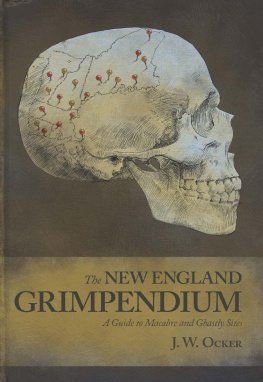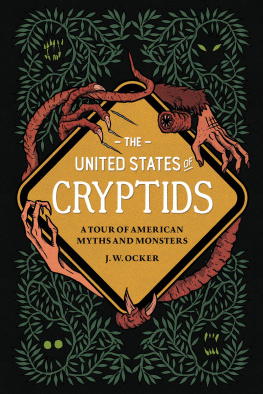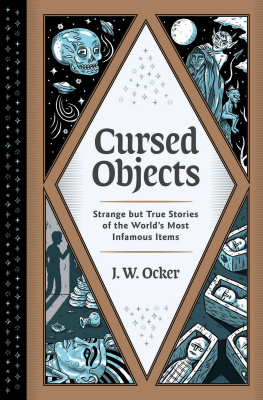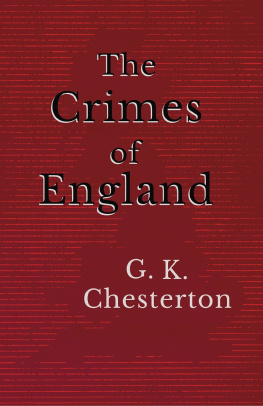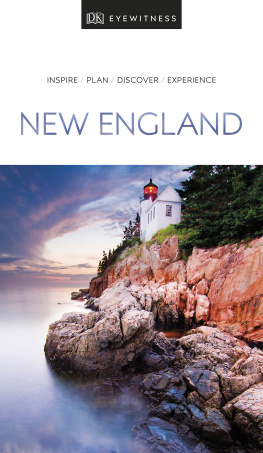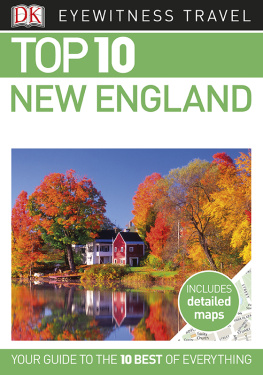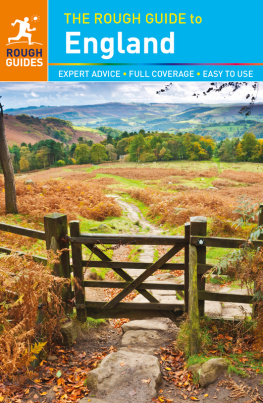J. W. Ocker
Copyright 2010 by J. W. Ocker
All rights reserved. No part of this book may be reproduced in any form or by any electronic or mechanical means including information storage and retrieval systems without permission in writing from the publisher, except by a reviewer, who may quote brief passages.
Published by The Countryman Press, P.O. Box 748, Woodstock, VT 05091
INTRODUCTION
I GUESS THIS IS THE PART OF THE BOOK where I analyze and defend my (and, I assume, your) interest in the macabre, the grisly, the horrific, the dreadful, and all those other things not intended for polite dinner conversation. Truth is, the fact of death is a fact of life, and its no weirder to be fascinated with it than with the physical and intellectual feats of humankind or with the natural world around us. I mean, sure, there are nuances, factors, and contexts that make this topic a lot more of a complex one, but, honestly, death happens is probably as far as you need to go for a book about visiting stuff.
Of course, this book isnt just about the grim. Its also about New England, those six northeastern states that continue to share a common identity despite there being no reason to anymore. In the rough rectangle comprising the continental United States, New England is surely its darkest corner. Maybe its because of its age; maybe its because its landscape dies more gloriously in autumn than in many places and then is buried deeper and more somberly in its winter than many other places. Maybe its because so many of our classic horror authors were born here, making one surmise that whatever interior darkness they were able to express with their unique talents might be present in most New Englanders.
Okay, that last might be stretching it a bit. More than likely, New England has no more ghastliness than do any other random six states lumped together. Still, man, that doesnt mean thats not a whole lot of darkness.
Now, theres one thing Ive got to establish before you turn another page. This bookthis grimpendiumis not one of those registers of haunted places that are so popular these days, nor is it a collection of vague folklore. Sure, it does contain both haunted places and folklore, but this book is about actual things you can see and actual places you can visit.
This book is a travelogue, yes, a spooky and at times gruesome travelogue, but a travelogue nonetheless, and it features somewhere in the neighborhood of 200 macabre sites, attractions, and artifacts that can be seen throughout New England. The subject of each chapter in this book is either a tangible, visitable thing or is connected to at least one tangible, visitable thingfor instance, a monument, a building, a museum artifact, and much, much stranger. I know, because I have visited all of them. And I have the carsick odometer to prove it.
If New England is the spooky attic at the top of the country, then youre about to read the account of a man who has rifled through that attic as if it were the afternoon before Halloween and he hasnt found a costume yet. While compiling it Ive gotten to know a fascinating side of New Englandeven if I cant use a lot of it for polite dinner conversation.
For the purposes of this book, Ive divided every bit of eeriness and morbidity I found into five sections. Horror Legends and Personalities traces the traces left in New England by the many artists, writers, musicians, actors, and uncategorizables who have made a name for themselves in the macabre. Infamous Crimes, Killers, and Tragedies details the many ways New Englanders have memorialized people, events, and atrocities that it would be easier on their peace of mind to forget. Horror Movie Filming Locales involves all the pieces of New England real estate that the horror film genre has staked a claim to with its celluloid flags. Notable Cemeteries, Gravestones, and Other Memento Mori is about, well, notable cemeteries, gravestones, and other memento mori. Finally, Classic Monsters delves into all the different creatures weve invented to scare ourselves with because Nature herself apparently didnt provide enough ways to frighten us.
In the end, the macabre yields an irresistible intrigue to most of us, whether that intrigue manifests itself as an obsession with the luridness of the nightly news, a hunger for horror novels, or a simple quick rubberneck at an auto accident.
Whether it should or not, that intrigue still just makes sense to me. After all, the human skull is one of the more compelling shapes ever created, the graveyard is one of the weirdest ideas the human race has ever had, fear of monsters is more universal than appreciation of Shakespeare, and death is something we will one day all have in common. Its a dark world, New England is no exception, and it could use your headlights to light it up a little on your own New England road trips.
Like death itself, getting there is a lot of the adventure.
J. W. Ocker
Nashua, NH

ONE
Horror Legends and Personalities
S OME MEN AND WOMEN make their mark in life through death, earning fame from the funereal. These horror legends and personalities include writers, artists, actors, directors, musicians, and other public figures of less categorizable pursuit. These artists have toiled in the mines of the macabre and have unearthed blood and bone, death and dread, horror and terrorboth to figure out the blacker parts of our existence, andas every child who has ever jumped out of a closet or thrown a spider to scare a sibling knowsbecause its fun to do. Some of those mentioned in this section became masters of the morbid, elevating the craft of the darker genres. Others only dallied with the macabre, although in such ways as to catch the imagination of the public, who now forever associate those artists with the grim and unearthly.
Tempting though it be for me to broadly claim that this area of the country uniquely breeds and draws this type of artist, the fact is that New England certainly boasts some of the most famous practitioners of the ghastly, including Edgar Allan Poe, Claude Rains, Edith Wharton, Henry James, and many others, all of whom are memorialized within its borders. These legends and personalities have more than the dark arts in common. They have also made their mark in some way in New England: They were born here, lived here, were buried here, sojourned here, erected works here, or were honored hereeach leaving behind imprints on the often frozen New England soil. Some of these imprints have been memorialized with plaques and gravestones, markers and museums. Other imprints take a bit more digging to discover.

